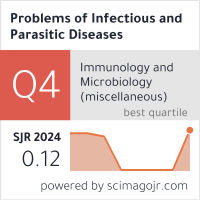SARS-COV-2: INSIGHT INTO THE EMERGING GENETIC VARIANTS
Mini Review
DOI:
https://doi.org/10.58395/pipd.v49i3.73Keywords:
SARS-CoV-2, mutation, genetic variantAbstract
SARS-CoV-2 is a highly contagious virus, which appeared in China in late 2019, spread rapidly and caused the largest pandemic in the last 100 years. Despite the intensive research, there is no specific antiviral drug currently. Effective vaccines have been developed in a short time and they are already widely used. As a RNA virus, SARS-CoV-2 mutates constantly, and several thousand genetic variants have emerged in the course of the pandemic, some of which are associated with increased infectivity, reinfection risk, reduced activity of therapeutic antibodies and reduced effectiveness of vaccines. This review highlights the features in SARS-CoV-2 structure and replication cycle that would help to understand the significance of individual mutations contained in the emerging genetic variants and to predict the impact of mutations on viral transmissibility, disease severity, diagnostics, therapeutics or immune escape. The main characteristics of the variants of concern are presented.
Downloads
References
Zhou P. A pneumonia outbreak associated with a new coronavirus of probable bat origin. Nature, 2020, 579: 270-273.
Satarker S, Nampoothiri M. Structural Proteins in Severe Acute Respiratory Syndrome Coronavirus-2. Arch Med Res, 2020.
Al-Qaaneh AM, Alshammari T, Aldahhan R, Aldossary H, Alkhalifah ZA, Francis Borgio J. Genome composition and genetic characterization of SARS-CoV-2. Saudi J Biol Sci. 2021;28(3):1978-1989.
Shamsi A, et al. Potential drug targets of SARS-CoV-2: From genomics to therapeutics. Int J Biol Macromol. 2021;177:1-9.
Kadam SB, Sukhramani GS, Bishnoi P, Pable AA, Barvkar VT. SARS-CoV-2, the pandemic coronavirus: Molecular and structural insights. J Basic Microbiol. 2021;61(3):180-202.
Pilley TS. Gene of the month: the 2019-nCoV/SARS-CoV-2 novel coronavirus spike protein. J Clin Pathol. 2020;73(7):366-369.
Duan L, Zheng Q, Zhang H, Niu Y, Lou Y, Wang H. The SARS-CoV-2 Spike Glycoprotein Biosynthesis, Structure, Function, and Antigenicity: Implications for the Design of Spike-Based Vaccine Immunogens. Front Immunol, 2020;11:576622.
Mittal A, Manjunath K, Ranjan RK, Kaushik S, Kumar S, Verma V. COVID-19 pandemic: Insights into structure, function, and hACE2 receptor recognition by SARS-CoV-2. PloS Pathog. 2020:16(8): e1008762.
Rehman H, Ahmad I. COVID-19: a wreak havoc across the globe. Arch Physiol Biochem. 2020;1-13.
Coutard B, Valle C, de Lamballerie X, Canard B, Seidah NG, Decroly E. The spike glycoprotein of the new coronavirus 2019-nCoV contains a furin-like cleavage site absent in CoV of the same clade. Antiviral Res. 2020;176:104742.
Wang L, Xiang Y. Spike Glycoprotein-Mediated Entry of SARS Coronaviruses. Viruses. 2020,12(11):1289.
Hatmal MM, Alshaer W, Al-Hatamleh MAI, Hatmal M, Smadi O, Mutasem O. Taha MO et al. Comprehensive Structural and Molecular Comparison of Spike Proteins of SARS-CoV-2, SARS-CoV and MERS-CoV, and Their Interactions with ACE2. Cells. 2020; 9(12):2638.
Gómez CE, Perdiguero B, Esteban M. Emerging SARS-CoV-2 Variants and Impact in Global Vaccination Programs against SARS-CoV-2/COVID-19. Vaccines (Basel). 2021;9(3):243.
Guo S, Liu K, Zheng J. The Genetic Variant of SARS-CoV-2: would It Matter for Controlling the Devastating Pandemic? Int J Biol Sci. 2021;17(6):1476-1485.
Davies NG, Abbott S, Barnard RC, et al. Estimated transmissibility and impact of SARS-CoV-2 lineage B.1.1.7 in England. MedRXiv 2021.
Horby P, Huntley C, Davies N, Edmunds J, Ferguson N, Medley G, et al. NERVTAG: Note on B.1.1.7 Severity, 20 January 2021. 2021. Scientific Advisory Group for Emergencies, GOV, UK.
Boehm E, Kronig I, Neher RA, Eckerle I, Vetter P, Kaiser L, et al. Novel SARS-CoV-2 variants: the pandemics within the pandemic. Clin Microbiol Infect. 2021;S1198-743X(21)00262-7
Jia Z, Gong W. Will Mutations in the Spike Protein of SARS-CoV-2 Lead to the Failure of COVID-19 Vaccines? J Korean Med Sci. 2021;36(18):e124
Wang Z., Schmidt F., Weisblum Y., Muecksch F., Barnes C.O., Finkin S., Schaefer-Babajew D., Cipolla M., Gaebler C., Lieberman J.A. mRNA vaccine-elicited antibodies to SARS-CoV-2 and circulating variants. Nature. 2021;592(7855):616-622.
Li R, Liu J, Zhang H. The challenge of emerging SARS-CoV-2 mutants to vaccine development. J Genet Genomics. 2021 Apr 20.
ECDC. Emergence of SARS-CoV-2 B.1.617 variants in India and situation in the EU/EEA. 11 May, 2021.
Downloads
Published
Issue
Section
License
Copyright (c) 2022 Prof. Neli Korsun, Ivelina Trifonova, Veselin Dobrinov, Iliyana Grigorova, Svetla Angelova, Assoc. prof. Ivaylo Alexiev (Author)

This work is licensed under a Creative Commons Attribution 4.0 International License.






